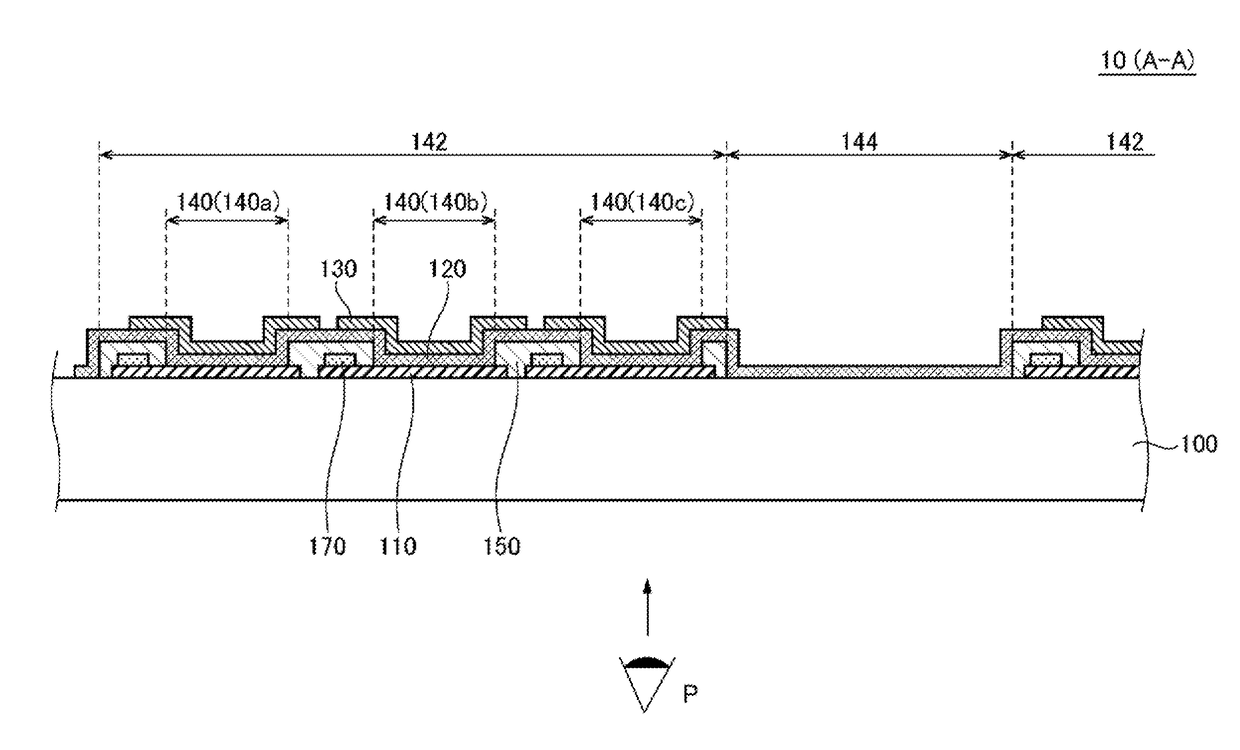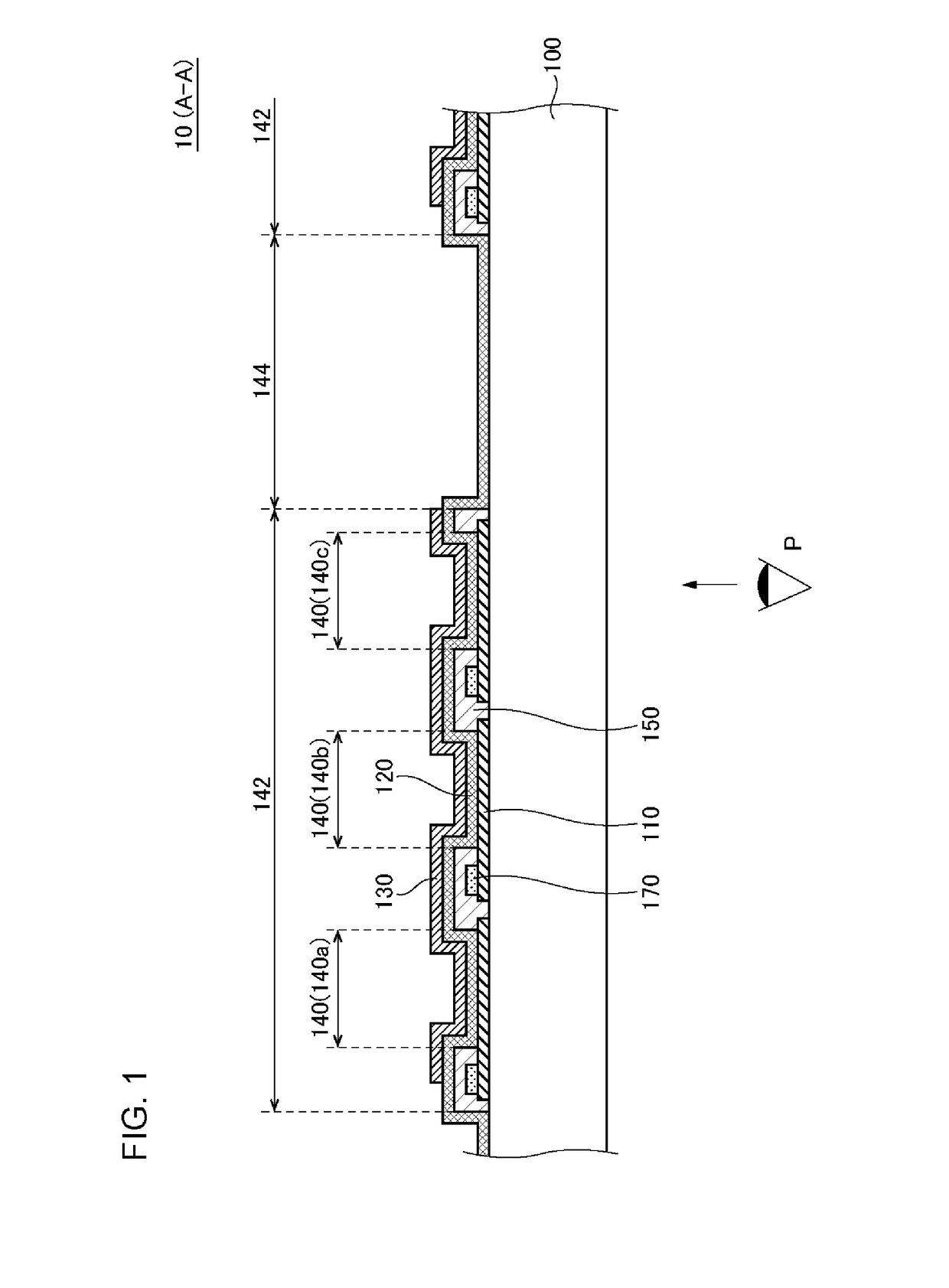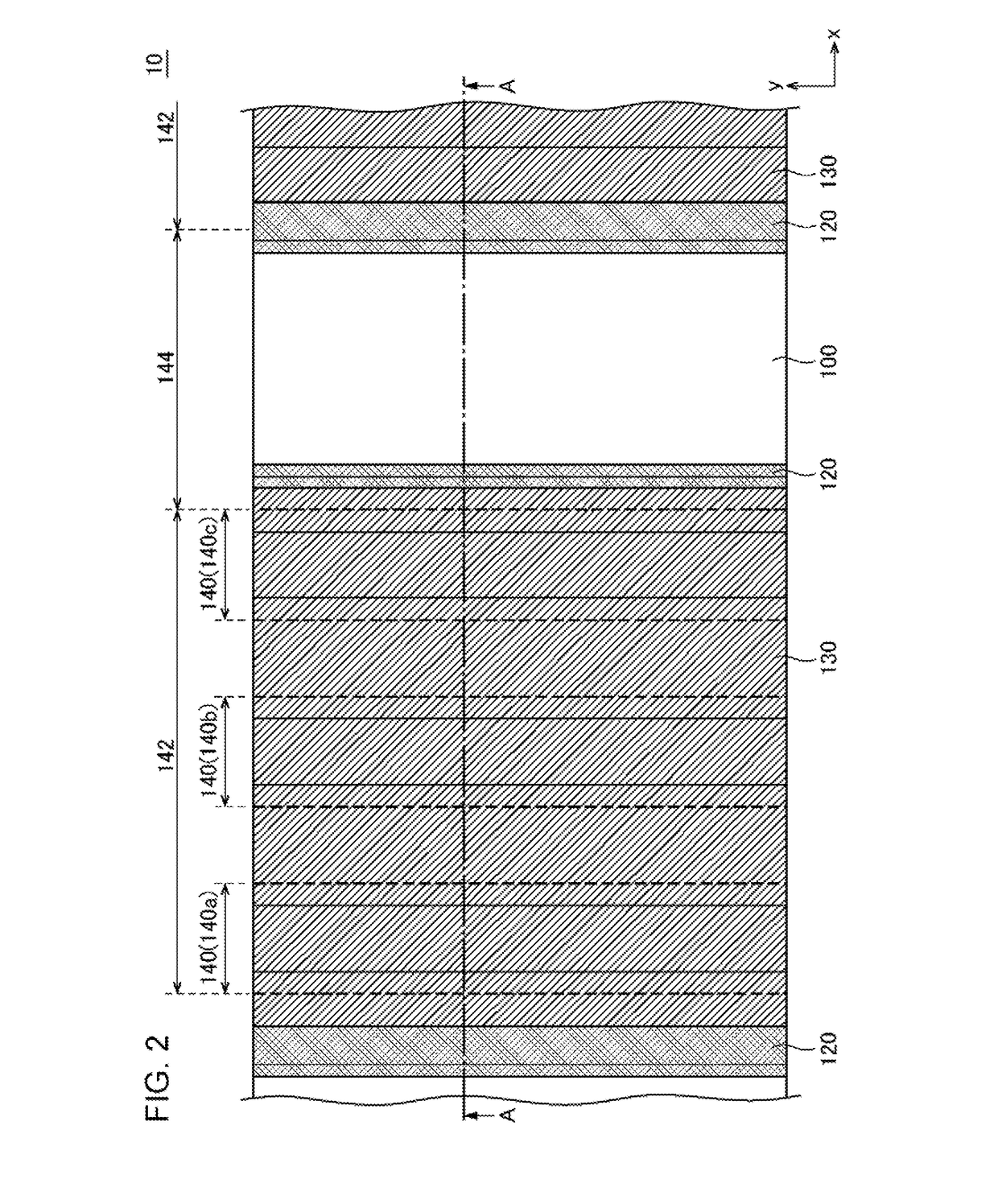Light-emitting device
- Summary
- Abstract
- Description
- Claims
- Application Information
AI Technical Summary
Benefits of technology
Problems solved by technology
Method used
Image
Examples
modification example 1
[0039]FIG. 3 is a cross-sectional view illustrating a light-emitting device 10 according to Modification Example 1, and corresponds to FIG. 1 in the embodiment. The light-emitting device 10 according to the present modification example has the same configuration as that of the light-emitting device 10 according to the embodiment, except that the second electrode 130 is provided for each light-emitting unit 140.
[0040]In the present modification example, as is the case with the embodiment, it is also possible to make the non-light-emitting region 144 wider, or make the light-emitting unit 140 wider compared to a case where the non-light-emitting region 144 is provided per each of plural light-emitting units 140.
modification example 2
[0041]FIG. 4 is a cross-sectional view illustrating a light-emitting device 10 according to Modification Example 2. The light-emitting device 10 according to Modification Example 2 has the same configuration as that of the light-emitting device 10 according to the embodiment or Modification Example 1, except that no organic layer 120 is formed at least in a portion (for example, an entire portion) of the non-light-emitting region 144. FIG. 4 illustrates a case where the configuration is the same as that of the light-emitting device 10 according the embodiment.
[0042]In the present modification example, as is the case with the embodiment, it is also possible to make the non-light-emitting region 144 wider, or make the light-emitting unit 140 wider compared to a case where the non-light-emitting region 144 is provided per each of plural light-emitting units 140. Further, since no organic layer 120 is formed at least in a portion of the non-light-emitting region 144, a light transmittan...
PUM
 Login to View More
Login to View More Abstract
Description
Claims
Application Information
 Login to View More
Login to View More - R&D
- Intellectual Property
- Life Sciences
- Materials
- Tech Scout
- Unparalleled Data Quality
- Higher Quality Content
- 60% Fewer Hallucinations
Browse by: Latest US Patents, China's latest patents, Technical Efficacy Thesaurus, Application Domain, Technology Topic, Popular Technical Reports.
© 2025 PatSnap. All rights reserved.Legal|Privacy policy|Modern Slavery Act Transparency Statement|Sitemap|About US| Contact US: help@patsnap.com



